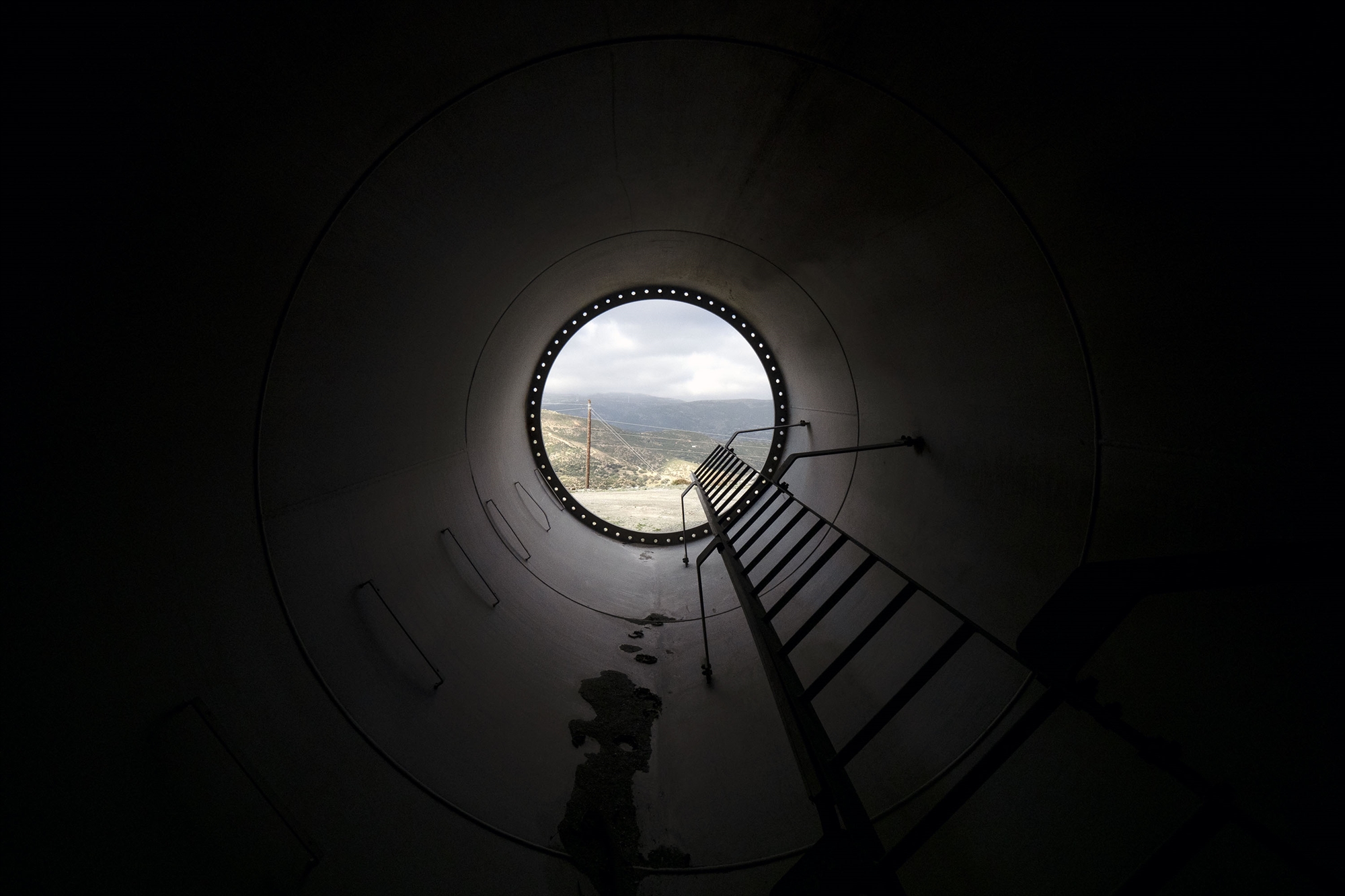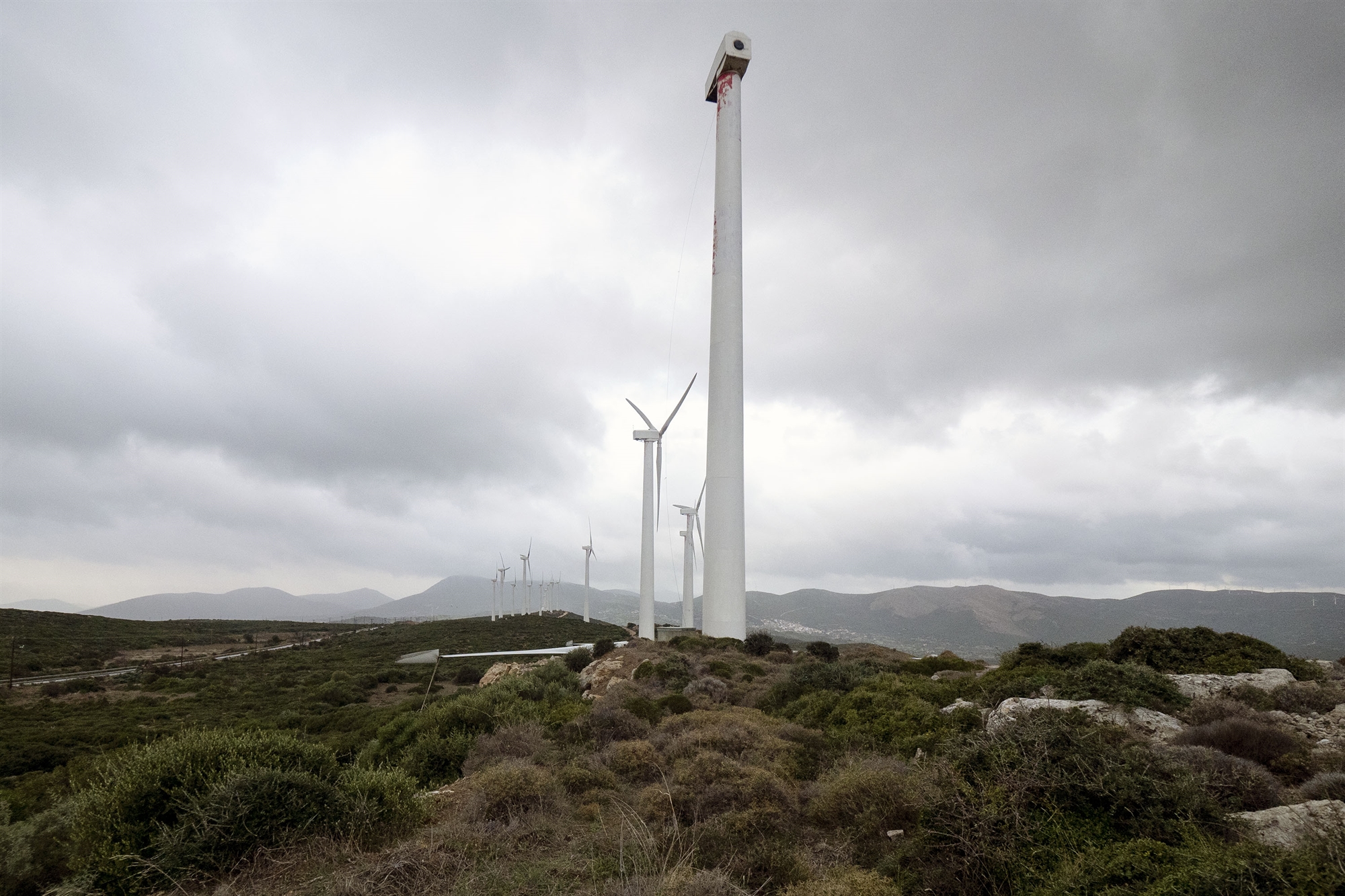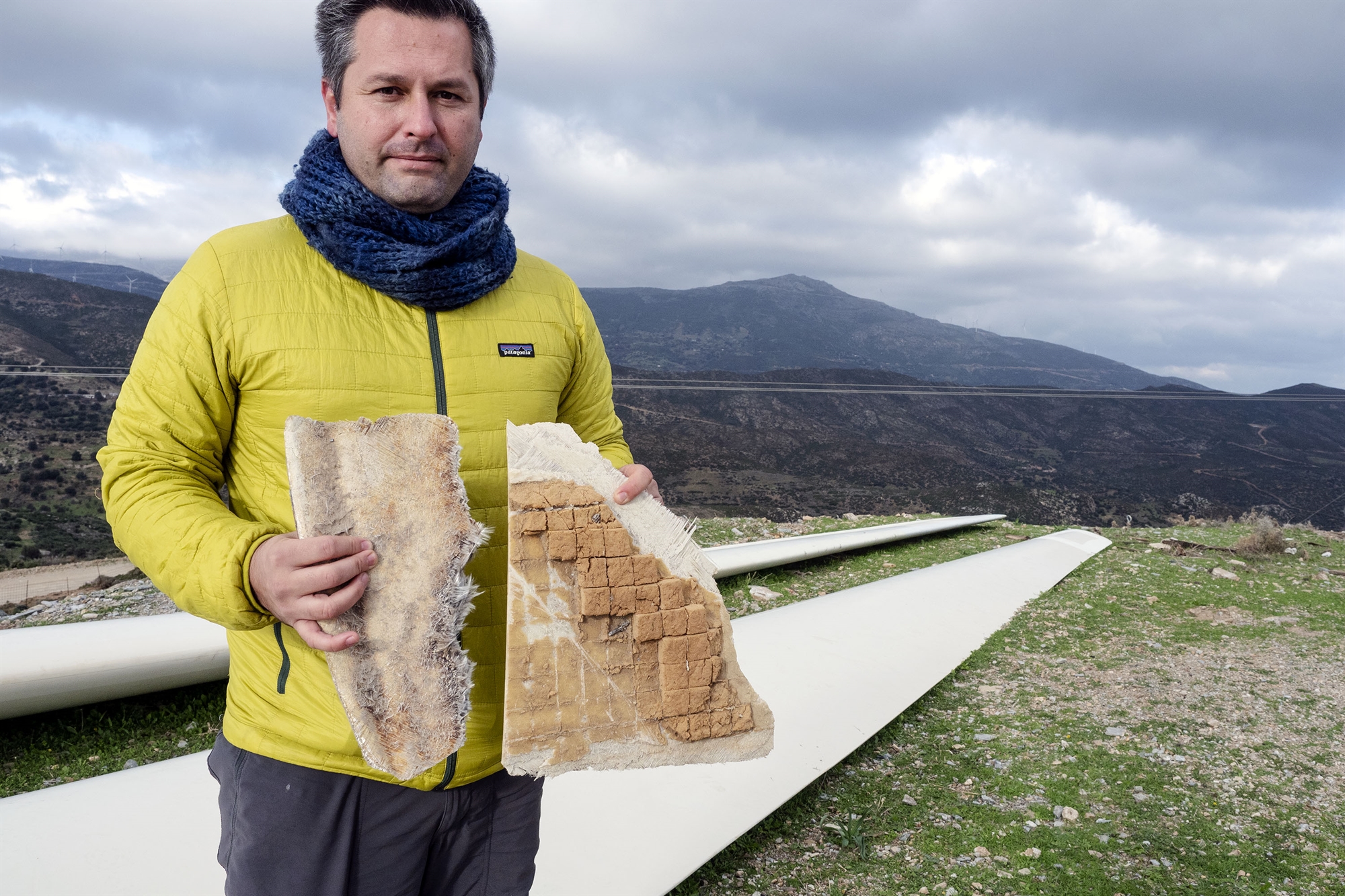
There is something otherworldly in the mountains above Kastri, near the southern tip of Evia. On one side is the Aegean Sea, which changes color under the winter clouds. On the other side, the mountain, reminiscent of a quarry of roads and cut slopes, is filled with successive clusters of windmills buzzing in a strong wind. Somewhere the most paradoxical part of the picture: like a giant toy that fell and crashed, eight windmills lie disassembled on the ground.
“This particular wind farm has been abandoned for years and has begun to rot,” says Tasos Baltas, president of the Chalkis Mountaineers Association. “In 2021, the French-German channel Arte came to the region to report. All procedures were immediately started, the company that owned the park was sold, decisions were made to dismantle the windmills and restore the site, which, as you can see, did not move forward.” Mr. Baltas picks up a fragment of the impeller of one of the windmills from the ground. “The fins break apart and fill the place with microplastics.”

The concrete wind farm in Castries, Evia, is not the only abandoned one, according to local authorities. “There are more, in Marmari and elsewhere. The most common thing is that at an old wind farm some of the wind turbines are working, while the rest are out of order and abandoned, since it is unprofitable to replace them,” Mr. Baltas estimates.
Residents fear that in the coming years the island will turn into a cemetery for windmills. “Only in Caristia today there are 427 wind turbines, of which 303 are located in the Natura region. According to the RAE, the capacity of the region is exceeded by 60%. The damage done to the area is already irreversible. What will happen in the next few years when they stop working?” It should be noted that the special environmental study currently under review by Natura for the areas of Evia essentially “excludes” not only areas with existing wind farms (in which the protected site has clearly degraded), but also those … for a new one. For example, as he mentions, the zone in the mountains of central Evia “after being informed by the Ministry of the Interior that the investments were of strategic importance, received a decision on the approval of environmental conditions and is therefore considered as an existing project. (subzone ZDOE3). All this is in supposedly protected areas.
90% of the mass of the aggregates is recycled, and the ribs are crushed and burned.
The fears of the inhabitants of Evia are not unfounded. The “retirement” of wind farms that have been decommissioned is a problem that Greece is starting to face now, since the first permits for wind farms were issued in the late 90s and are now expiring, a 25-year period has expired, for which the permits have been issued. licensed. According to the data provided by RAE “K”, in 2022 the license for wind farms with a capacity of 350 MW across the country expired, another 50 MW will follow this year, 111 MW in 2024, and 202 MW in 2025. In total, until 2030, the license for wind farms with a capacity of 1551 MW expires (corresponding to about 25% of those currently existing). If we assume that the old wind turbines were 2 MW each, then only in 2022 the license for 175 wind turbines expired, which will be 775 by 2030.

“The current direction for end-of-life wind farms is to replace wind turbines and continue to operate them, the so-called reconfiguration,” explains Panagiotis Papastamatiou, CEO of the Hellenic Scientific Association for Wind Energy (ELETAEN). ), a set of companies operating in the field of renewable energy. “The wind turbine motors of the 90s are very durable, surviving up to 25 years without any problems. After the license expires, if it is not renewed, there is no chance of not reconfiguring for many reasons. Firstly, the first wind farms were built in the best places in terms of wind potential. In addition, the infrastructure, such as roads, is ready and the existence of the wind farm is given for two decades – there are no objections. Therefore, in my opinion, wind “cemeteries” will not be created in our country precisely because there is an added value in existing wind parks.”
Dismantling and managing old wind turbines is not an easy task. “It comes with a price,” Mr. Papastamatiou says. “90% of the mass of a wind turbine is metal, so it is recyclable. The same applies to its electromechanical equipment. The problem is the fins, which are made of synthetic materials like those used on boats. Today in our country they are received by certified companies, the largest of which is located in Ritson, which crush them and turn them into a kind of pellets that are sent for burning. Another alternative is to create urban technology from them, a kind of reuse. For example, two years ago we sent a wing to the Elven Mill in Trikala. But it’s not a solution, it can’t cover quantities.”

Wind turbine blade control is a problem that is being raised at the European level. “The main research is done by the aviation industry. Wind Europe has called for a ban on the disposal of synthetic materials, which is common in America. In general, there are two areas of research: new recycling technologies and the construction of new fenders from recyclable materials.”
As for the wind farm in Kastri Evia, it has now been taken over by Intrakat, which will continue the refurbishment and promise to restore unused areas. As he answered Q’s questions, “most of the materials are planned to be transferred for recycling. As for the fins, an attempt is being made to reuse parts of them for other purposes. The rest will be transferred to the management of specialized companies. The old foundations are in the process of being dismantled and the unused project area will be rehabilitated.” Ten old wind turbines (0.5 MW each) will be replaced by two (2.5 MW each) and the restart of the wind farm is scheduled for the third quarter of 2023.
The first wave of “leaving” in the country and its lessons
PPC Renewables is currently the only company in our country that has carried out a large-scale replacement of “first generation” wind turbines. The project lasted three years and faced many challenges, both geographical, as it was carried out simultaneously on eight islands, and technical, “taste” problems that the private sector will have to face in the coming years. .
Responsible for the modernization program was Angelos Cassimis, director of operation and production management for renewable energy projects at PPC Renewables. The program was valid from 2018 to 2021 and provided for the decommissioning of 101 wind turbines and their replacement with 23 more powerful ones. “The first wind farms in Greece were built by PPC and started operating in the mid to late 90s,” he explains. “The retrofit program was the first in Greece and concerned wind farms in Lemnos, Chios, Psara, Samos, Ikaria, Karpathos, South Evia and Sitia in Crete.”
There were many problems. “In principle, this was done simultaneously in many places, which means that there was a wide spread of construction sites. In addition, wind farms were scattered across islands remote from key support functions, where even staff was a problem. For example, it was difficult to find materials such as 3A gravel because there are no quarries on some islands and we had to transport it on barges. But we also ran into some technical difficulties. For example, due to the fact that new wind turbines have very long stretches and the existing road design may not be sufficient, we had to check if there are obstacles and if they can fit for the heavy vehicles that will carry them, both for access, as well as to remove them. ‘ Finally, the program took longer than expected, not only because of the coronavirus, but also because of … the wind. “Let’s not forget that both the transportation to the many islands and our ability to work in the field depend on the strength of the wind.”
How did PPC Renewables manage “decommissioned” wind turbines? “Some of them were sold on the secondary market and went abroad, either to be installed elsewhere with their mechanism updated, or to be used as spare parts,” says Mr. Kassimis. “Most, of course, ended up in Greece in units certified to manage them.”
Having completed the first major wind turbine decommissioning program in the country, Mr. Cassimis believes the most important lesson comes not from the technical part of the business, but from contact with local communities. “When the world is informed, it matures and embraces wind turbines. It is enough to comply with permits, specifications and have a connection with the local population.”
Source: Kathimerini
Emma Shawn is a talented and accomplished author, known for his in-depth and thought-provoking writing on politics. She currently works as a writer at 247 news reel. With a passion for political analysis and a talent for breaking down complex issues, Emma’s writing provides readers with a unique and insightful perspective on current events.